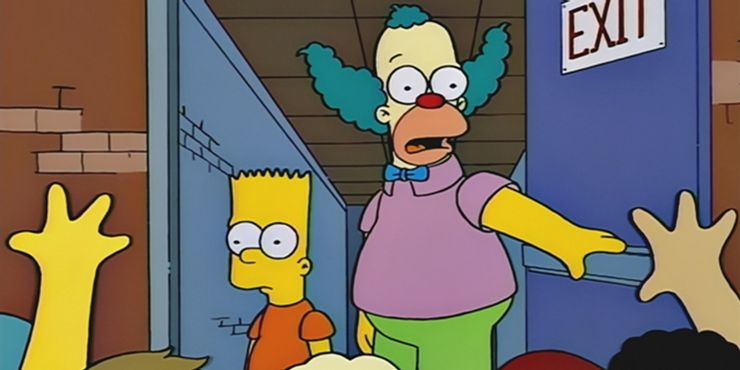The Simpsons is one of the most popular animated series to date. While it has been thought of as an example of a typical American family, the show has brought joy and entertainment throughout its many years on air. The show is currently on its 32nd season, with the 33rd season coming out in May 2022. Over the years, there have been several creative changes and plot twists. But did you ever wonder why Krusty the Clown looked very much like Homer Simpson?
In one of the original storylines, Krusty the Clown was supposed to be Homer Simpson in disguise. It was intended to be a twist, but Matt Groening decided to scrap the idea and maintain two separate characters.
How Did the Show Start?
The Simpsons is one of the longest-running animated and scripted primetime TV shows that started in 1989 and have continued until today. The show is the brainchild of cartoonist Matt Groening. It was initially intended as a short in The Tracey Ullman Show in 1987, one of the variety programs on Fox Broadcasting.
The show is set in the fictional American city of Springfield, centering on a family modeled after a typical fifties American family struggling with the changing times. The family is composed of Homer, the head of the household who works at a nuclear plant and is an alcoholic. Marge, the mother, is always depicted with a sound mind, Lisa, a musical protege, Bart, a prankster, and Maggie, the baby. (Source: Britannica)
The family was modeled after Groening’s own. His dad was named Homer, and his mom was Margaret. He had two younger sisters, Lisa and Maggie. According to Groening, his father, a cartoonist, and filmmaker influenced him to take the same path. (Source: Biography)
The Simpsons, as a family, is an exaggerated model of most people—those who are often consumed by envy, laziness, opportunity, stubbornness, and redemption. The show extends to side stories of the town’s strange residents and many guest stars voiced by their real-life counterparts. (Source: Britannica)
The show was an offshoot of Groening’s earlier Life in Hell comic strips published in the LA Reader. He immediately created a new set of characters known as The Simpsons. The series first aired on December 17, 1989, when producers decided to have it as a standalone series when they saw that the Tracey Ullman Show wasn’t doing well.
The show was Fox’s first TV series to rank among a season’s top 30 highest-rated shows, and the first season won an Emmy Award and was nominated for four other categories. In 2007, a feature-length film was released due to its long-standing success. (Source: Biography)
Changes in the Series
The series has seen several changes throughout the years. The 1987-1992 characters were different from what we have been watching today. Homer was angrier and was portrayed to be sterner than Homer of 1993, who became more careless and dumb. The first Bart was wimpier than the Bart we know now. (Source: Simpsons)
Here are other changes to the series many of us didn’t know about.
Homer and Krusty were One Person
In the earlier years of the series, creator Groening thought of the twist where Homer Simpson was secretly also Krusty the Clown. Groening wanted to address Bart’s issue with not respecting Homer but worshiping Krusty. The creator wished for an episode to show Bart that Krusty was Homer, but the plan was eventually dropped. (Source: Screen Rant)
Smithers was Black
The character Waylon Smithers, the famous assistant of millionaire Mr. Burns, was initially drawn as a black person in season 1. According to Groening, Smithers’ skin tone wasn’t racially motivated but resulted from an error in coloring him during production. He mentioned that they didn’t have enough budget to do retakes at the time, so the skin tone remained for the entire season. (Source: Cinema Blend)
